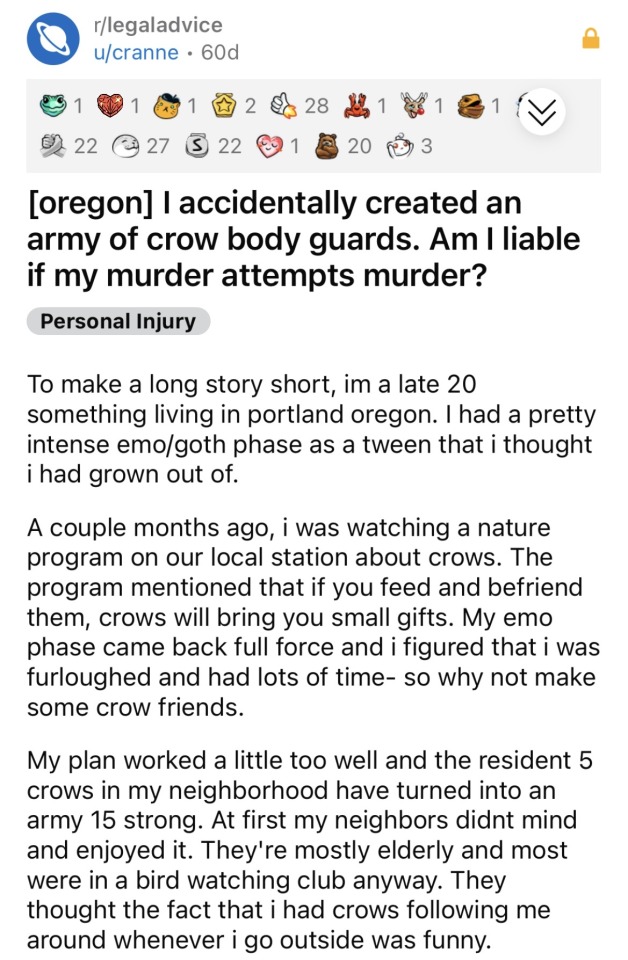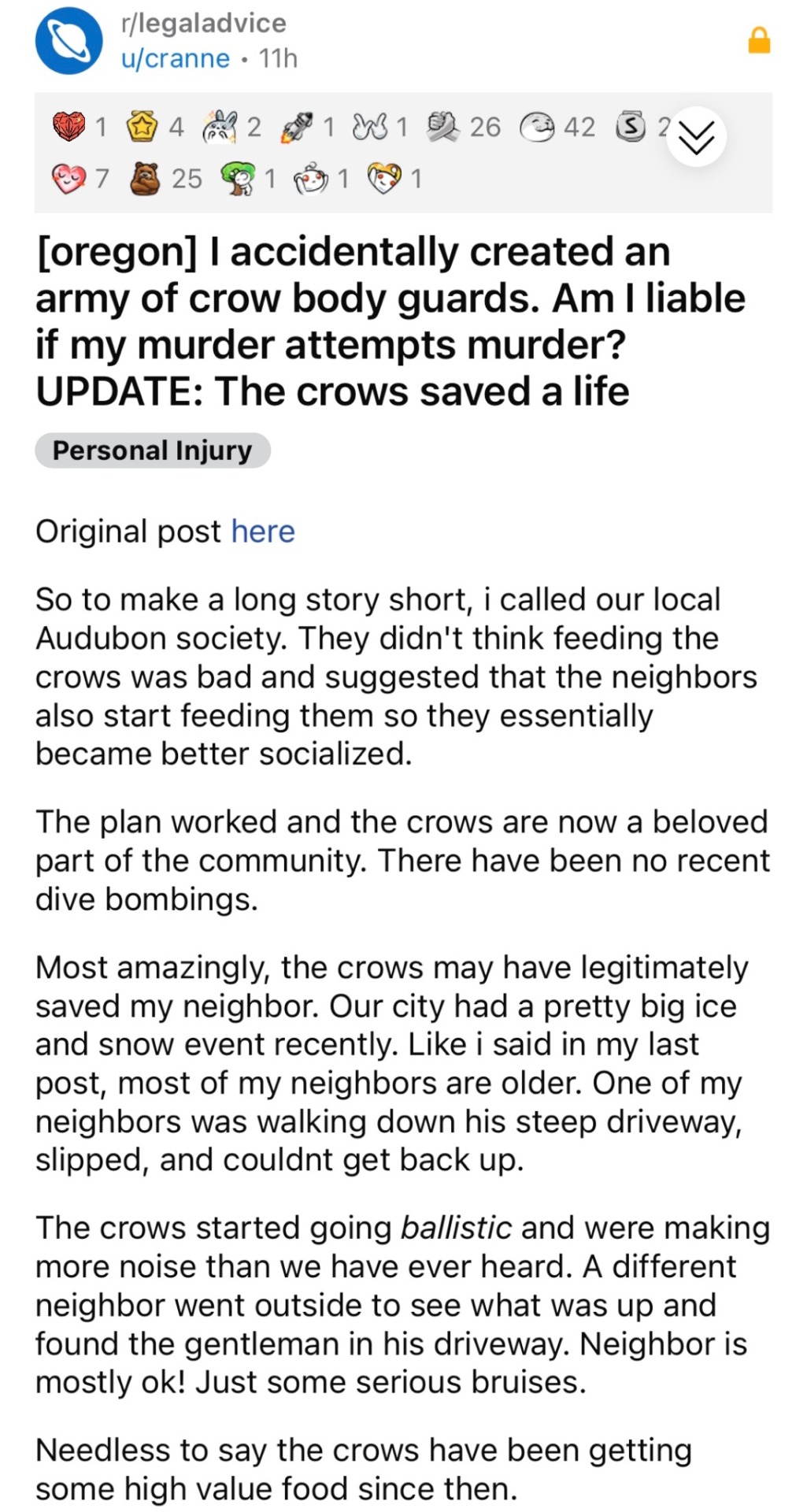Text
i’m obsessed with this


and then, two months later....


🥺
208K notes
·
View notes
Text
“u know that feel when no gf” no actually i dont because im a MANLY MAN who plays SEVERAL sports am i right my fellow sportsmen
486K notes
·
View notes
Text
i guess because i watch a lot of ytps and Extremely Specific Memey Video Edits youtube recommended me a video called “lotr but every time sam takes a step towards mordor he says itll be the farthest hes ever been” which is over 9 hours long and i zoned out completely and got a full hour and 20 minutes in before coming to my senses and realizing “what the fuck why am i watching this”. i can now perfectly recall the entire clip used in the video from beginning to end whenever i close my eyes ((birds cawing) “this is it” “this is what” “if i take one more step itll be the farthest away from home ive ever been” (birds cawing) “come on sam”) and let me tell you it is EVERY time he takes a step after the first time that scene plays. whoever edited this together has powers and abilities i fear and envy and pity all at once. anyways now youtube is recommending me sam/frodo amvs
37K notes
·
View notes
Text




Women in niqab practicing archery is the realest aesthetic of them all.
83K notes
·
View notes
Photo









“For the sake of all living things, including ourselves…”
I’d appreciate a like/reblog if you use them! (ノ´ヮ´)ノ*:・゚✧
✖ no kin, please
✖ do not delete my captions
54 notes
·
View notes
Text
me: *doesnt reply until the next solar eclipse*
me when someone doesnt reply after 8 minutes: you have to be kidding me. after all ive done for this friendship. youre just going to throw away all weve been through this easily, youve soiled our friendship and i hope it was all worth it in the end.
104K notes
·
View notes
Text
Find a soul that doesn't lose appreciation once they're used to you
17K notes
·
View notes
Text
Gender abolition, but make it:
clothes sorted by body shape and style, instead of gender
removing unnecessary gender markers from non-medical documents like a driver’s license
genderless bathrooms where the stalls have floor-to-ceiling walls for privacy
abolishing gendered toys, colors, professions, hobbies, etc.
they/them as the default if you don’t know someone
And NOT:
trans and non-binary people being barred from identifying with and expressing their gender
94K notes
·
View notes
Text
if these noodles want me to "raw men", well who am I to argue?
10K notes
·
View notes
Text
The Creatures of Yuletide: The Yule Goat

In case you were left wondering, Christmas is mostly pagan. A lot of modern-day traditions have roots in ancient pagan times, mostly from the Germanic and Scandinavian winter solstice celebrations. Santa is secretly Odin, the Yule Father. The Christmas Ghosts of Charles Dickens are inspired by the legends of ghosts that came to our world during the Winter Solstice. Today let’s talk about a tradition that I believe to be the most shameless and more ridiculously obvious inheritance from the pagan celebrations. Meet the goat brother of Santa Claus, the Yule Goat.
Spoiler: People used to dress as goats and went trick or treating during Christmas time. And in some places they still do. I’m not making this up 🤣
The Yule Goat is one most ancient symbols of the season. He is a figure that appears in holiday traditions across Scandinavia and Northern Europe. There, and in Sweden, Norway, and Finland, the Yule Goat is as much a part of Christmas tradition as Santa, Rudolph, or Frosty the Snowman.
The Yule Goats are wooden or straw figures that neighbors would hide in each other’s houses, meant to be passed on to another household when found. Now, it is most seen as a Christmas ornament, often made of straw with braided horns and a red ribbon around its neck. Yule Goat’s straw figures are usually placed under the Christmas tree.
In Swedish lore, the Yule Goat was said to be a spiritual being that dwelled in the house during Christmas, overlooking the preparations and celebrations. He would also be accompanying the Jultomte or Tomte, domestic spirits of the holiday season that became analogue to the American Santa. These gnomelike, goat-riding Christmas elves called tomten (Sweden), nissen (Norway), and tonttu (Finland), would deliver gifts to children on Christmas Eve. With time, they would end up stealing the spotlight from the goat.

I need to share this very weird and funny tradition regarding the goat. Since 1966 a Swedish town called Gävle [say: yeah-vleh] places a giant Yule Goat statue in the town square, and every year someone tries to burn it down. It seems that people now wait, and even bet, if the goat will make it to Christmas. In the past 50 years, the Gävle Yule Goat has been destroyed 35 times. Please look up, it’s very bizarre.

So, continuing, the History of the Yule Goat goes far. Since the 11th century there had been numerous traditions of goat figures and of men in full-size goat costumes during the Christmas celebrations. During the 17th century, in Sweden, it was costume that during Christmas or the Epiphany (The Three King’s Day), young men in costumes would walk between houses singing songs, enacting plays, and performing pranks. The Yule Goat would often appear in these pranks, usually as a scary figure demanding gifts. During the 19th century, men would often dress as goats to give gifts to their families.

So, where does the Yule Goat come from? The answer is mostly obvious by now.
The most popular theory, and my favorite, is that the Yule Goat is a worship of Thor, or rather, of Thor’s goats. In Norse mythology, Thor’s carriage was pulled by two goats, Tanngrisnir, “Gap-tooth”, and Tanngnjóstr, “Tooth-grinder”. Many times, Thor would slaughter both to eat, knowing they returned to life in the following morning.

In Sweden, part of the midwinter celebrations was the Yule Sacrifice. A man would dress in goatskins, carrying a goat-head effigy portraying one of Thor’s goats. He was symbolically killed but returned to life exactly as the sun does at Yule day.
From this came the Norwegian tradition of “Julebukking” or more correctly, “to go julebukk” (Gå julebukk). One man or many men from the community would dress a goat mask and fur cape to represent the ghosts of winter night. After that, they would go “trick or treating” from door-to-door receiving gifts from the towns folk to thank them for protection and keeping the winter ghosts at bay (in my last post I talked about this, it was believe that ghosts could come back to our world during the Winter Solstice and Winter times).



Christian missionaries modified the tradition and divorced its meaning from Paganism. Early Christian fathers proclaimed the Yule Goat as a demon. That’s why in the 17th century he was threatening figure. In Swedish records from this time, the Yule Goat is described as a dark and scary demonic figure that roamed the countryside on the night of December 25, demanding food and frightening devout Christians.
However eventually, the Yule goat became a benevolent being again, and children started to walk from house-to-house “trick or treating”, singing carols at the doorsteps of friends and neighbors. They wore costumes, particularly masks to hide their identity, and often gave gifts as well as receiving them.
It' actually uncanny how Christmas and Halloween were alike in the past.

Resuming everything, the church tried to demonize the Yule Goat, but it didn’t work out and after the 19th century the goat became a gift-giver like Saint Nicholas in the Scandinavian world, until he started been replaced by the Nisse or Tomte later.
I believe that the tradition of Julebukking is still alive. Even thought is dying in Europe, immigrants from rural communities from Scandinavian descend still keep it alive, in areas like Petersburg and Ketchikan in Alaska.
Just to finish, all I want to say is that if this post ever found someone of Swedish or Norwegian background, or just someone who knows the traditions of the Yule Goat and Julebukking better than me, feel free to correct me if I got something wrong. I'm fascinated by these Scandinavian Christmas traditions, and I wanted a first-hand account of them to help me understand them better.

483 notes
·
View notes
Text

cursed emojis that no one asked for but I don’t care
free to use!






149K notes
·
View notes
Text
55K notes
·
View notes








